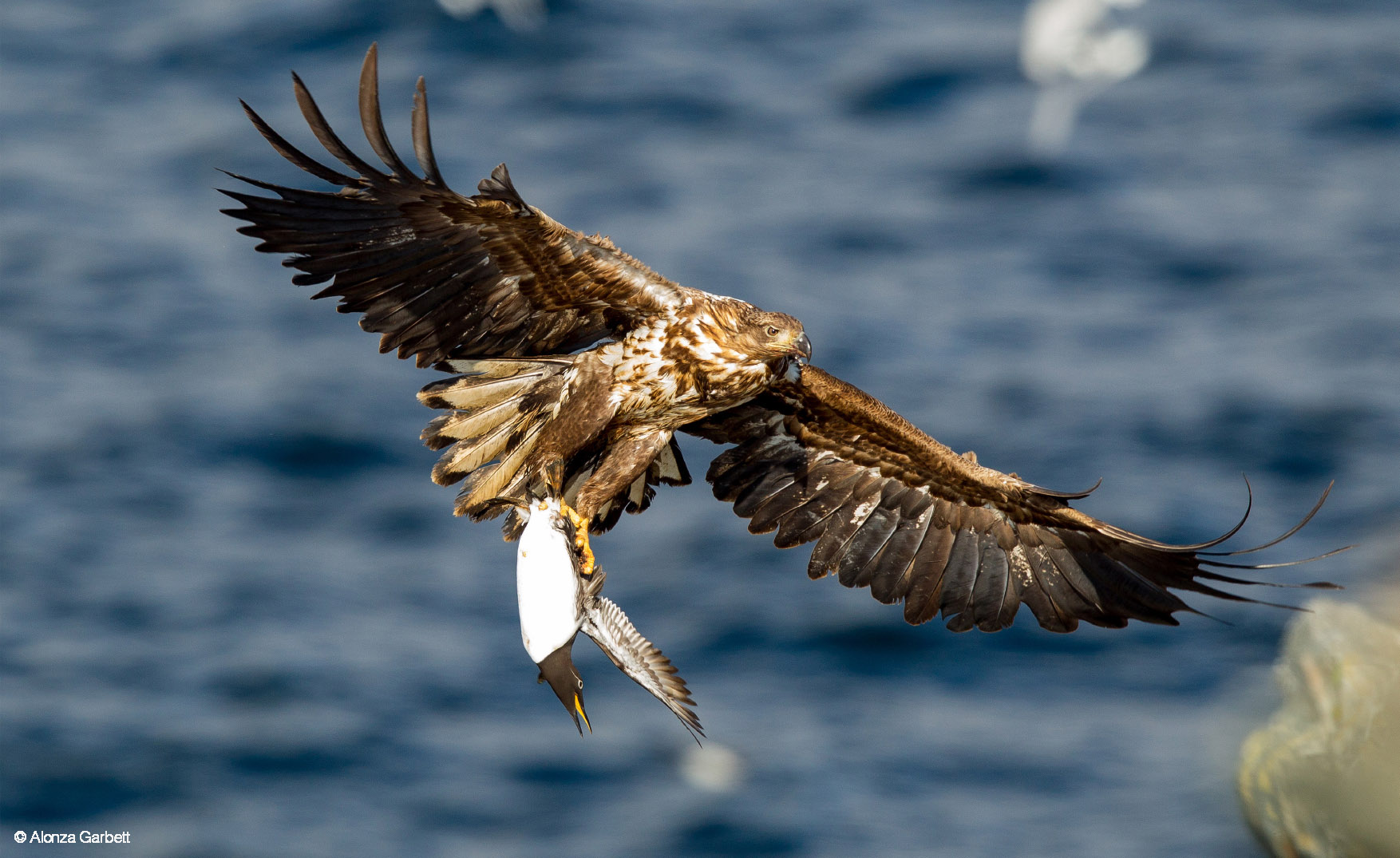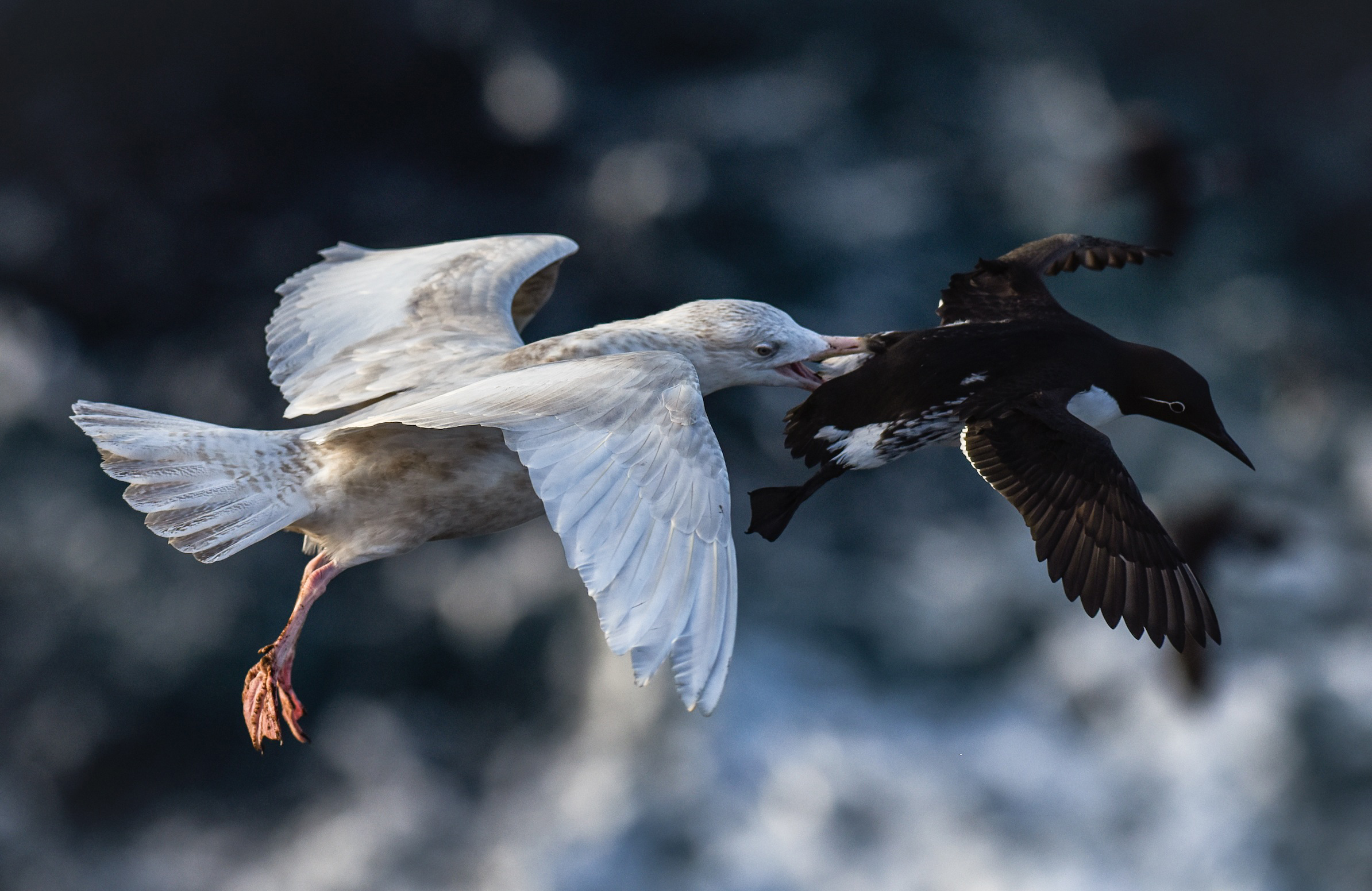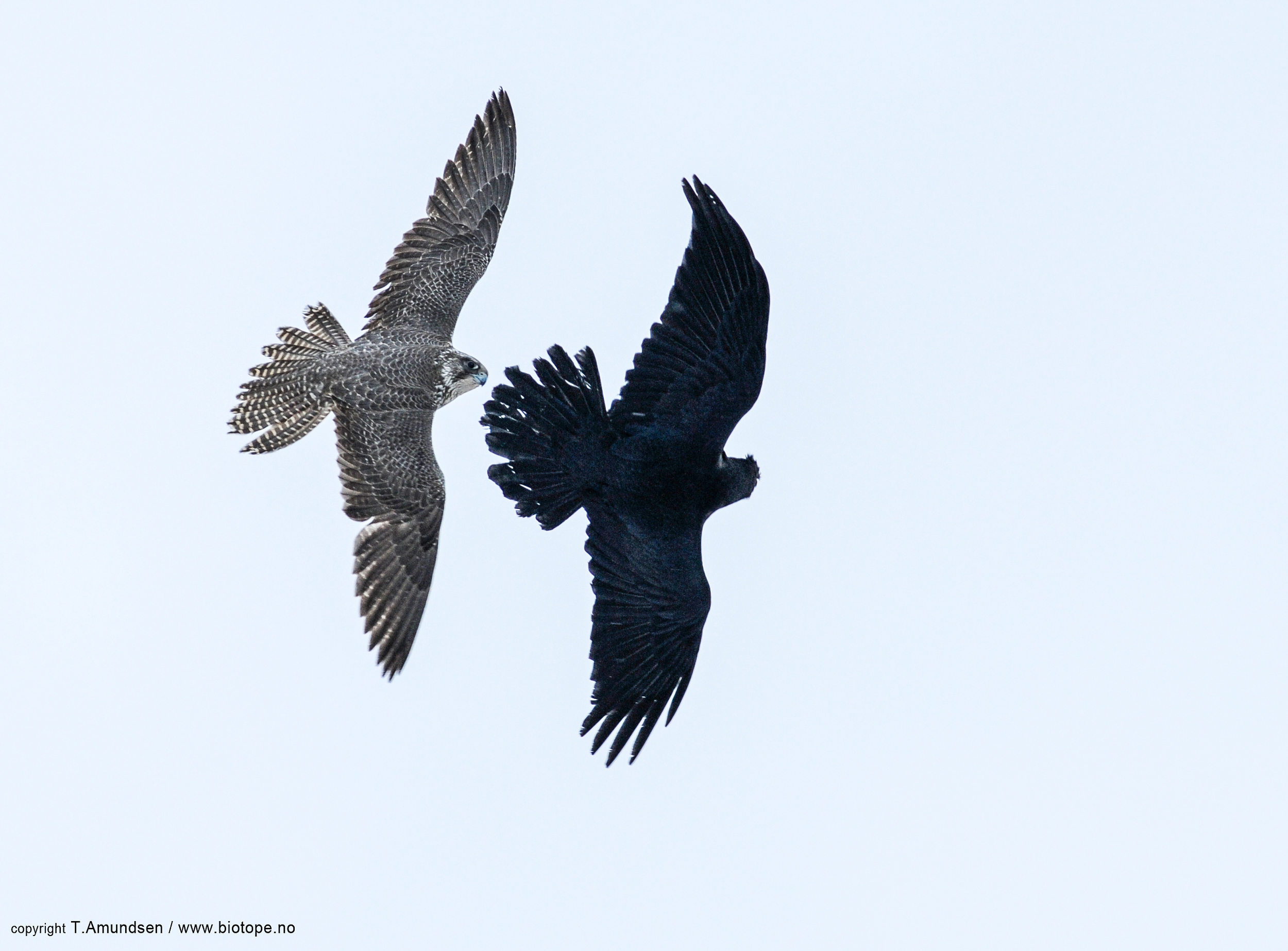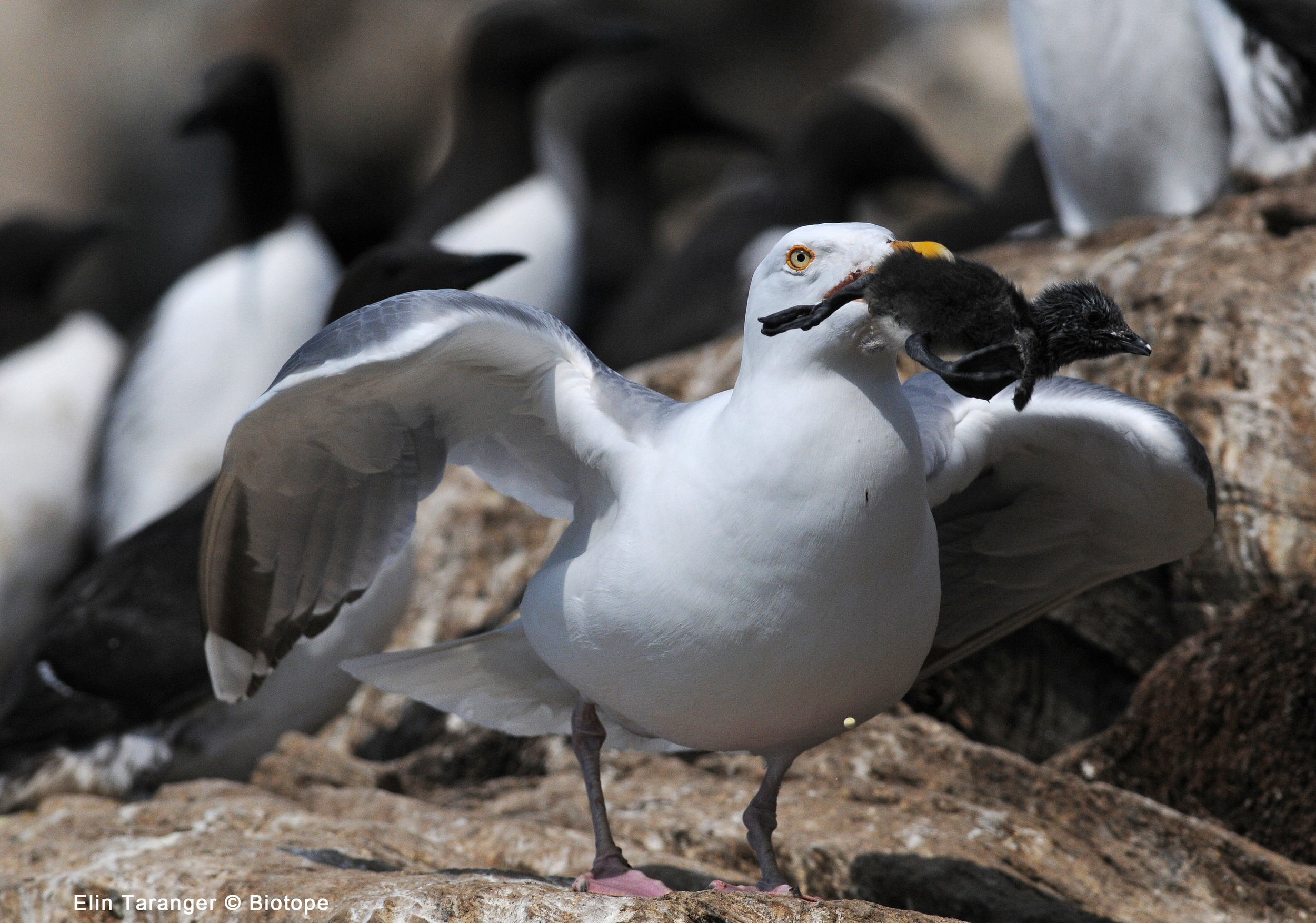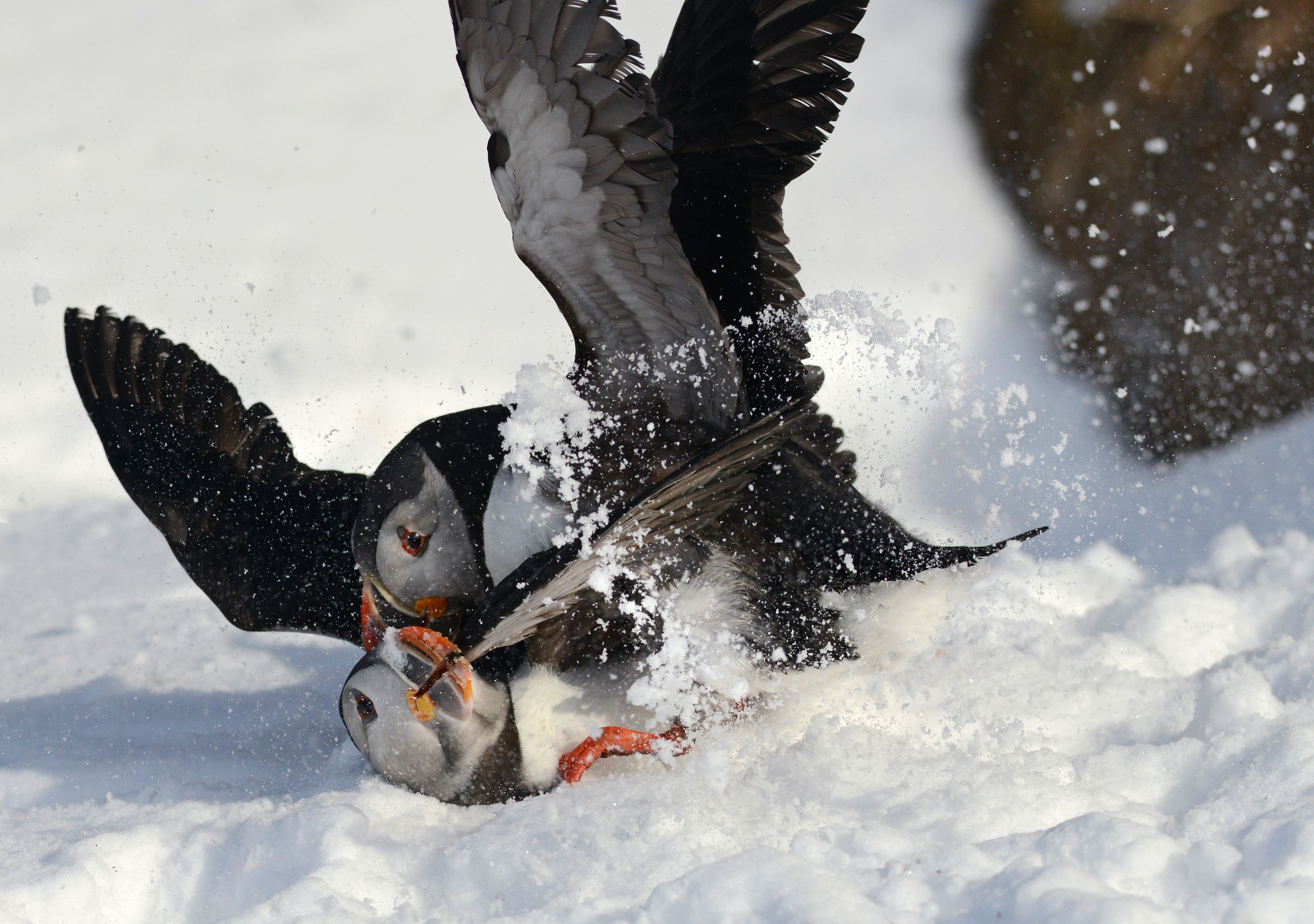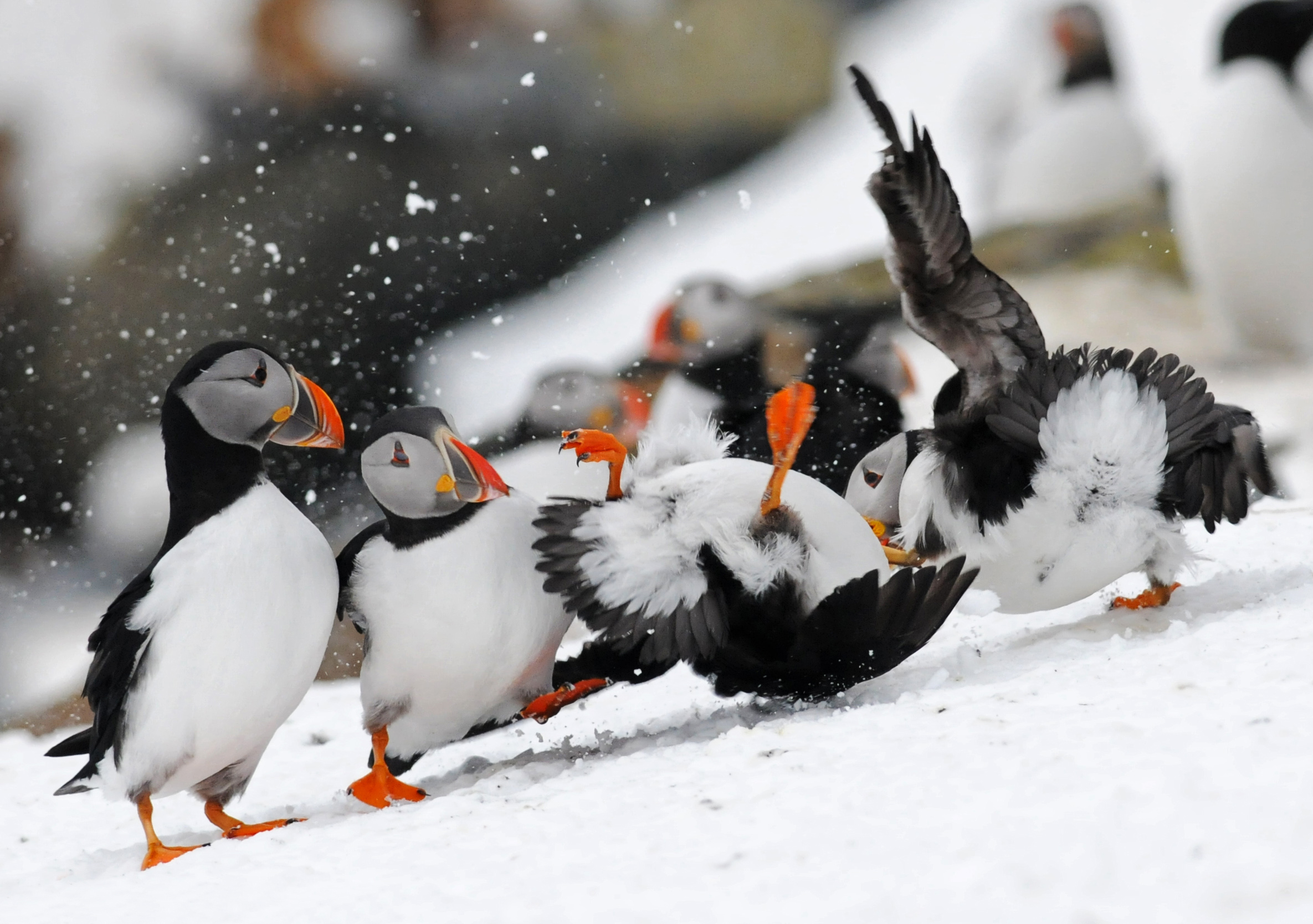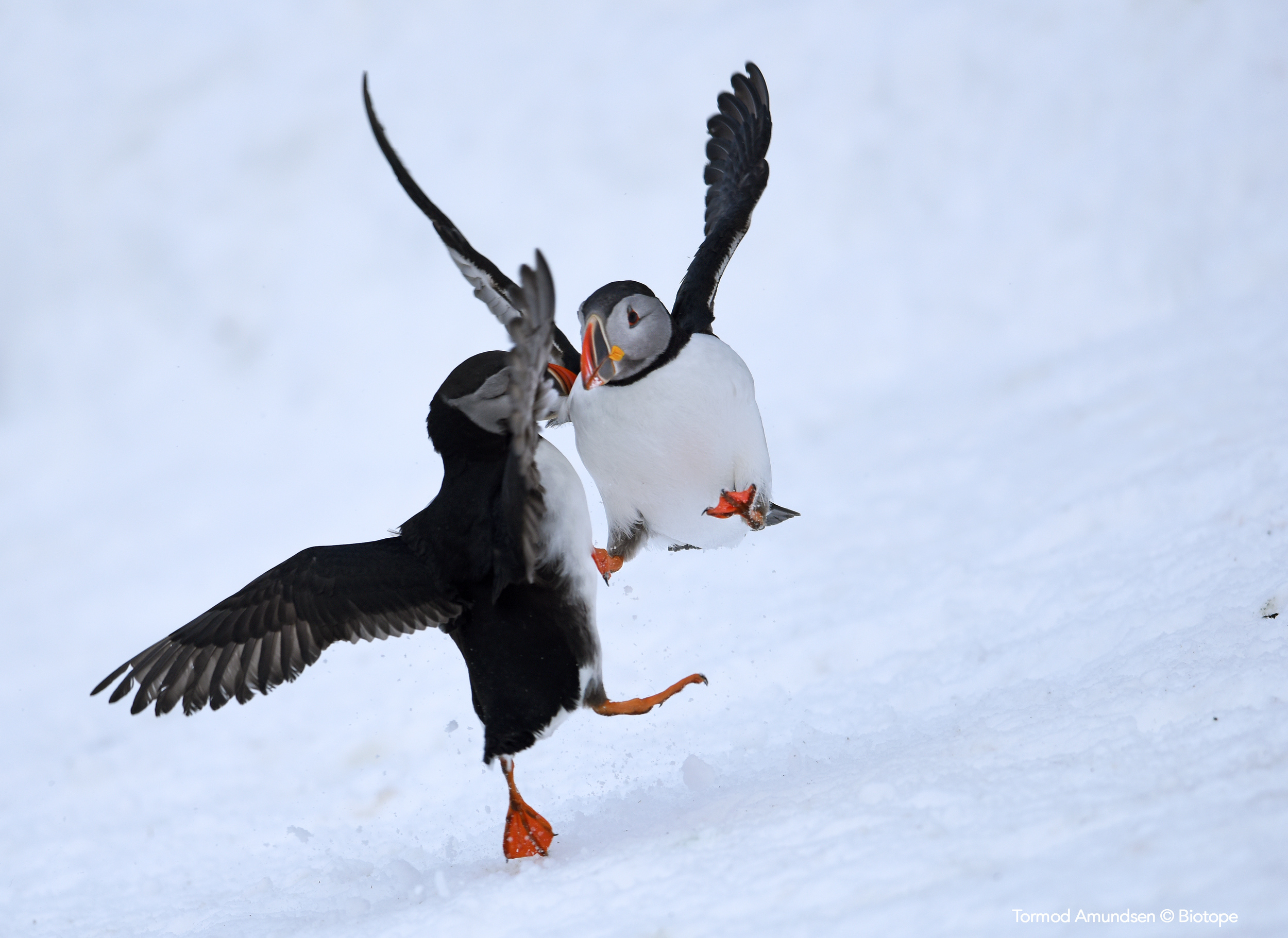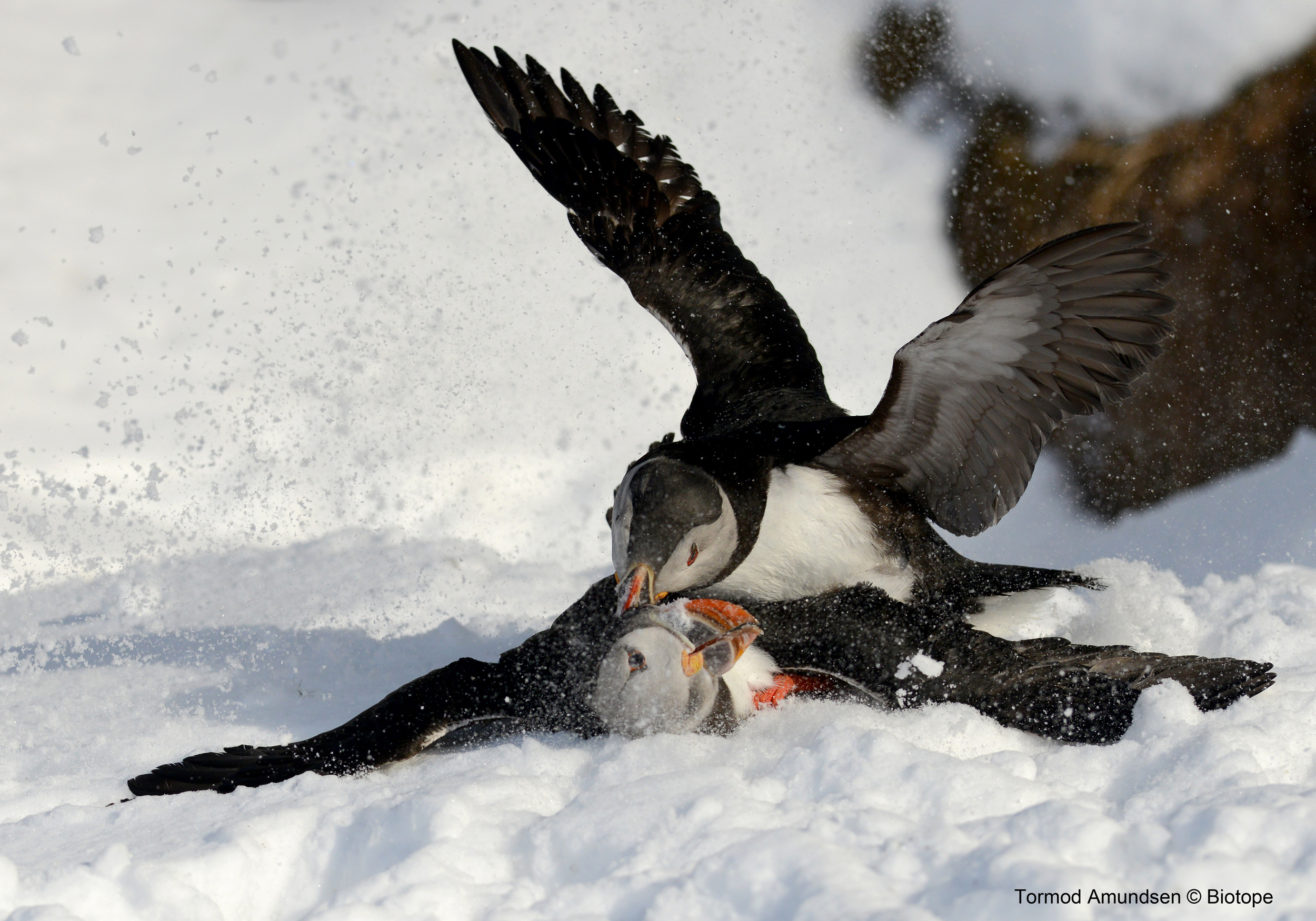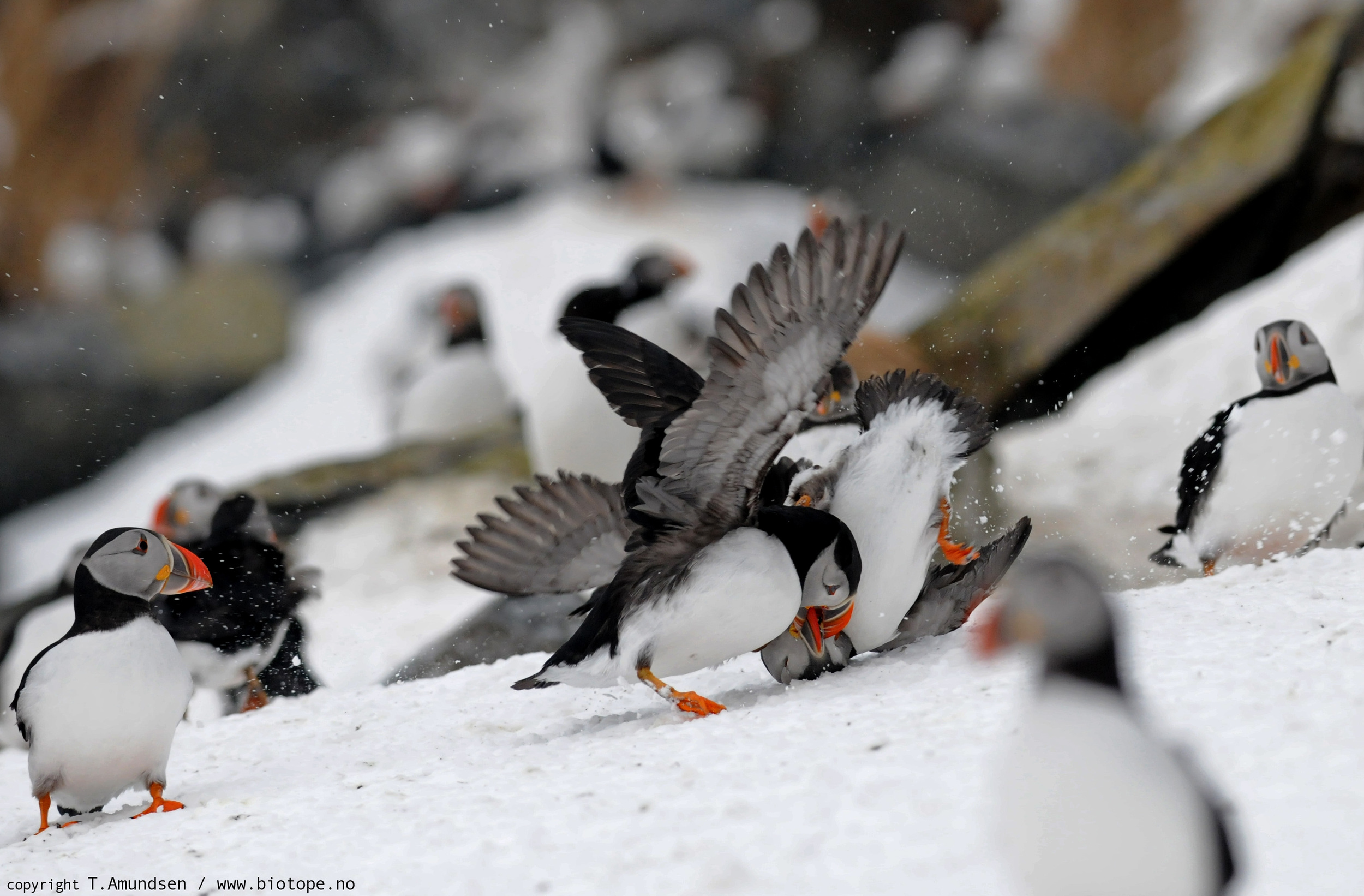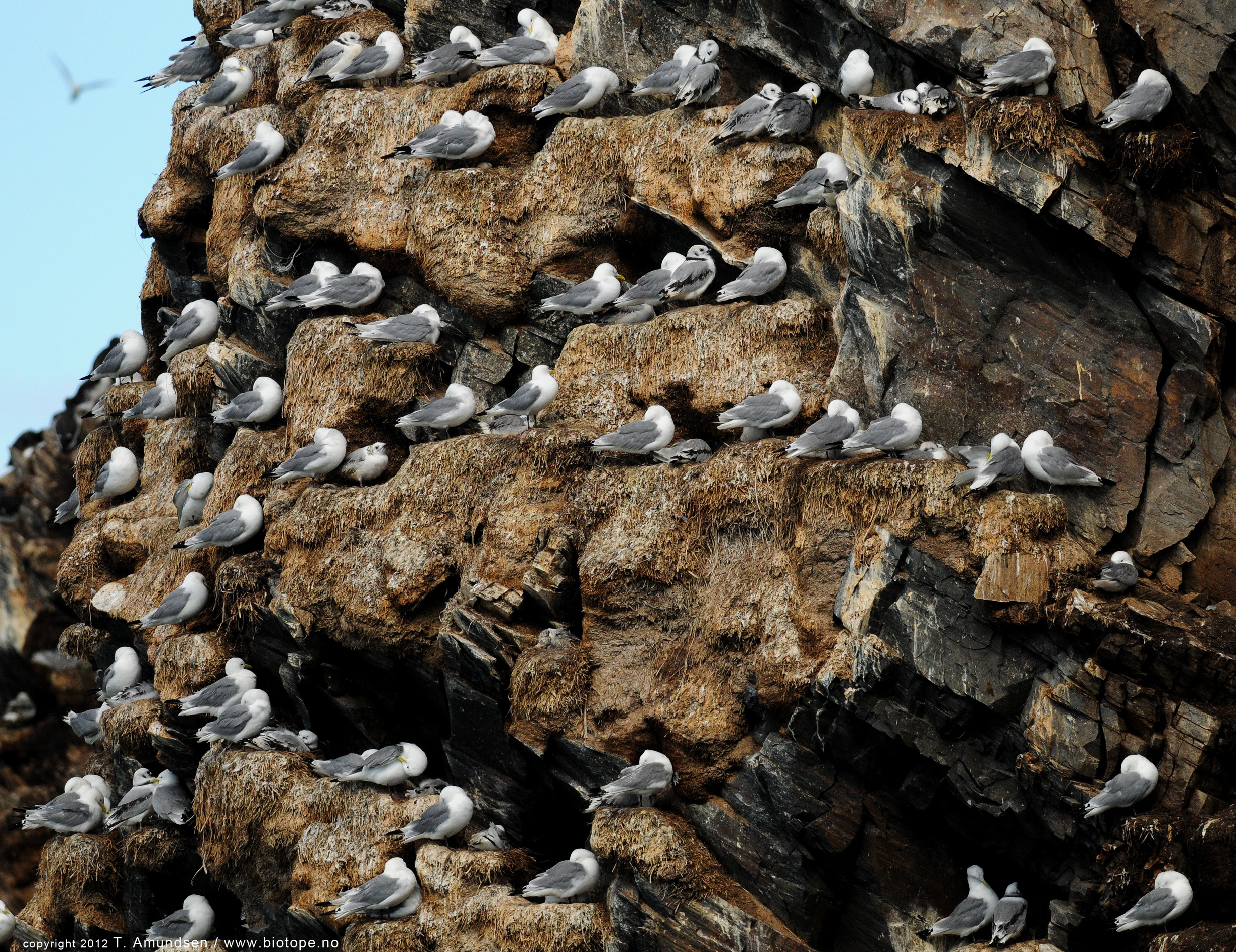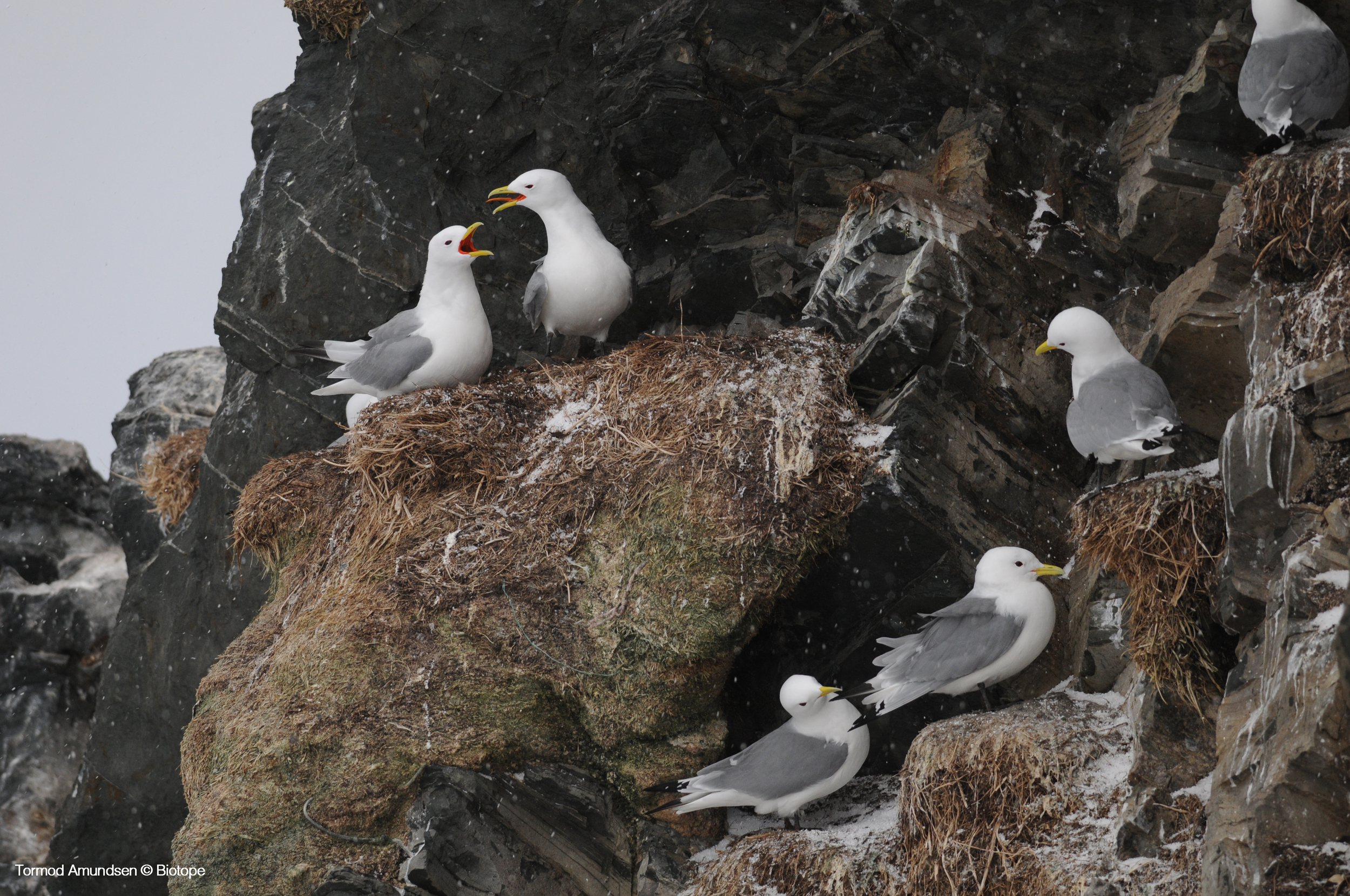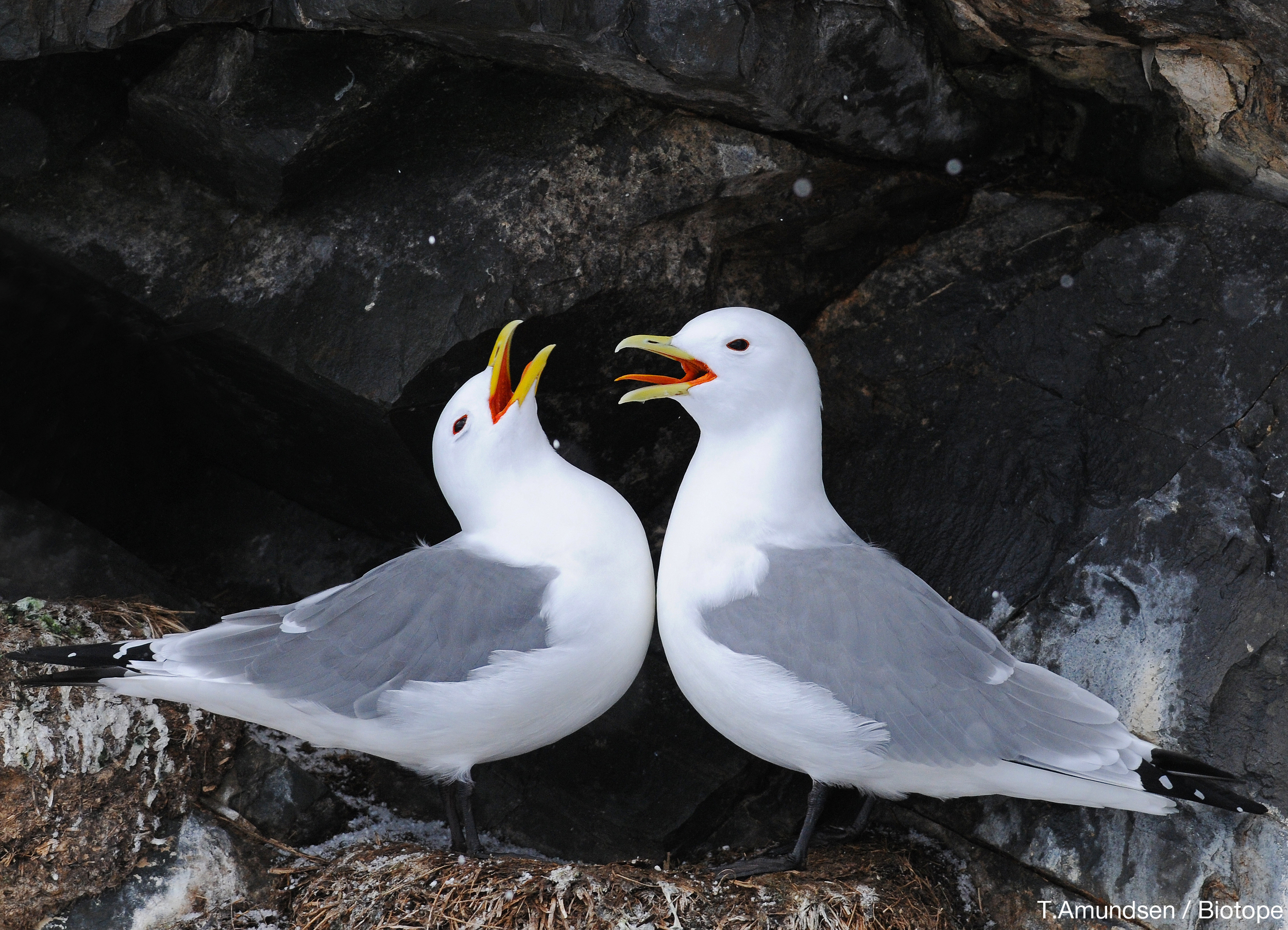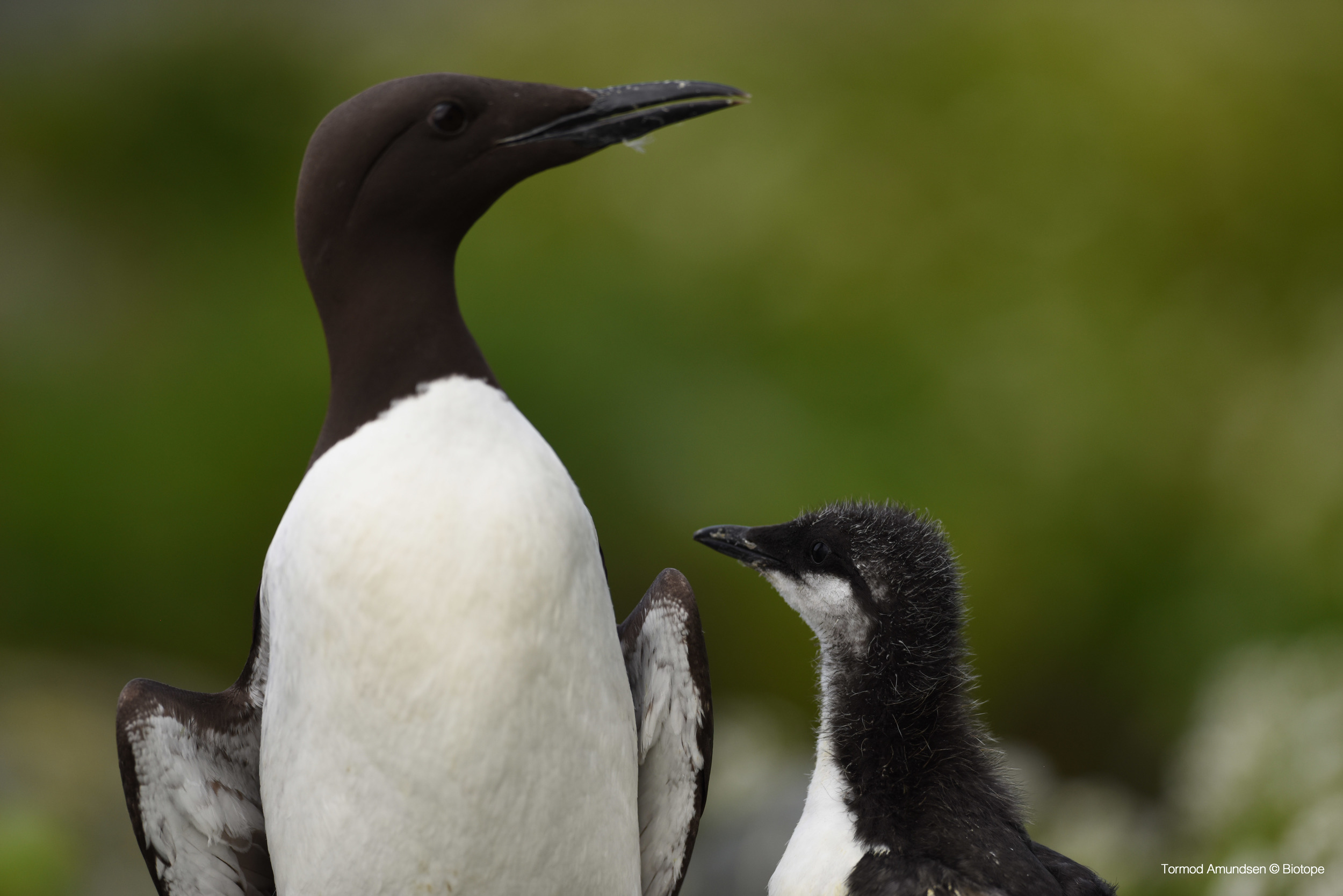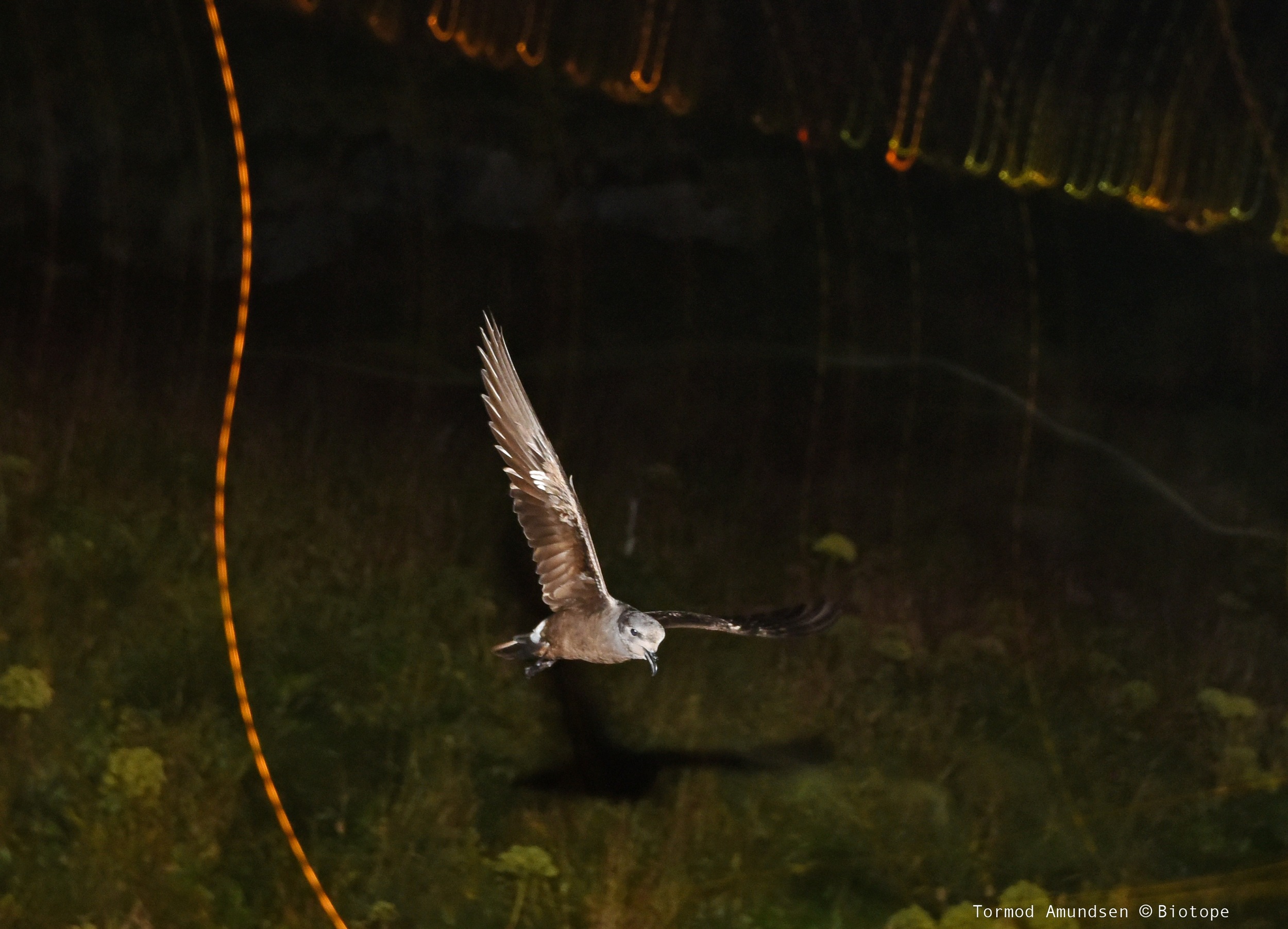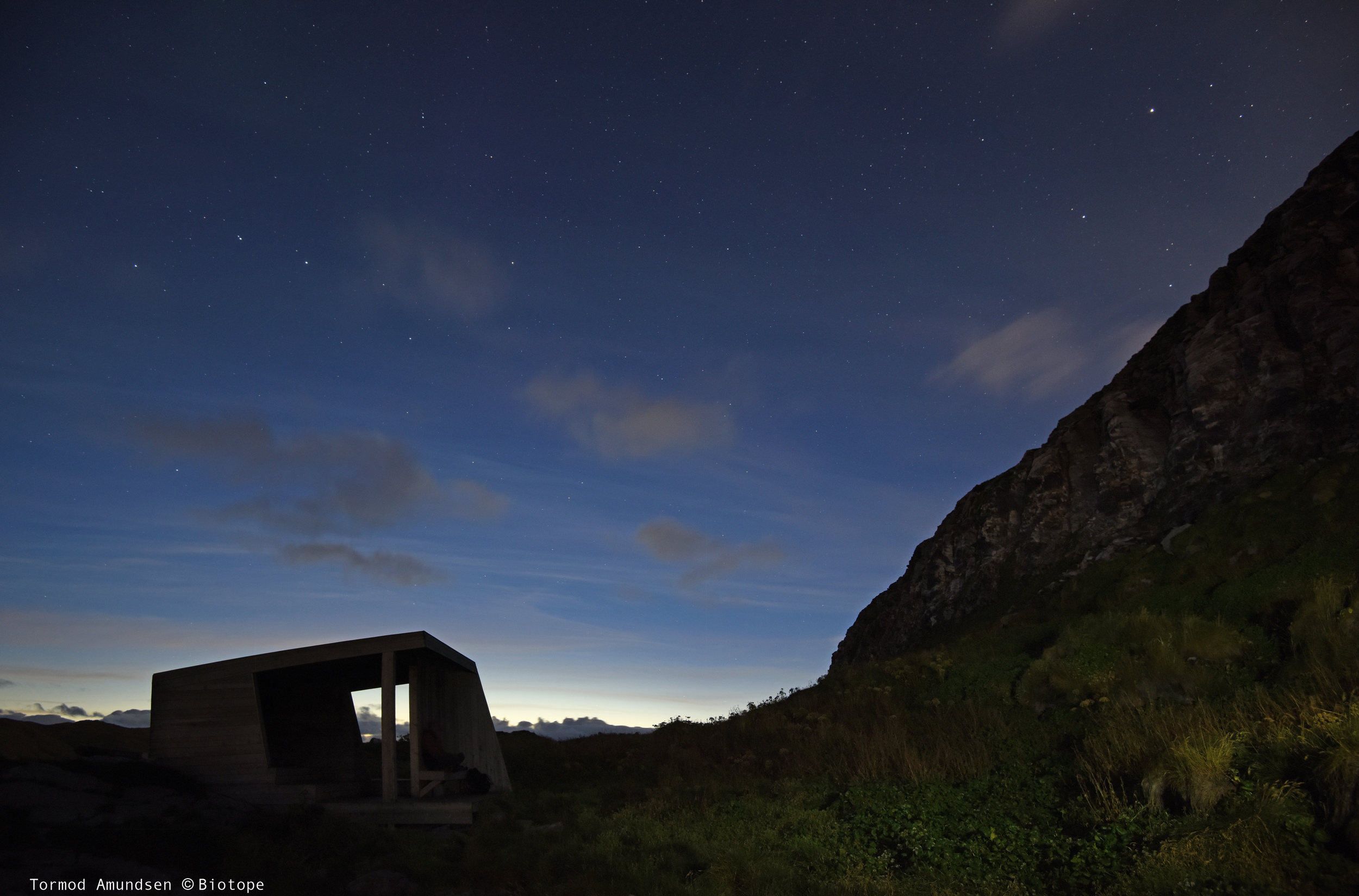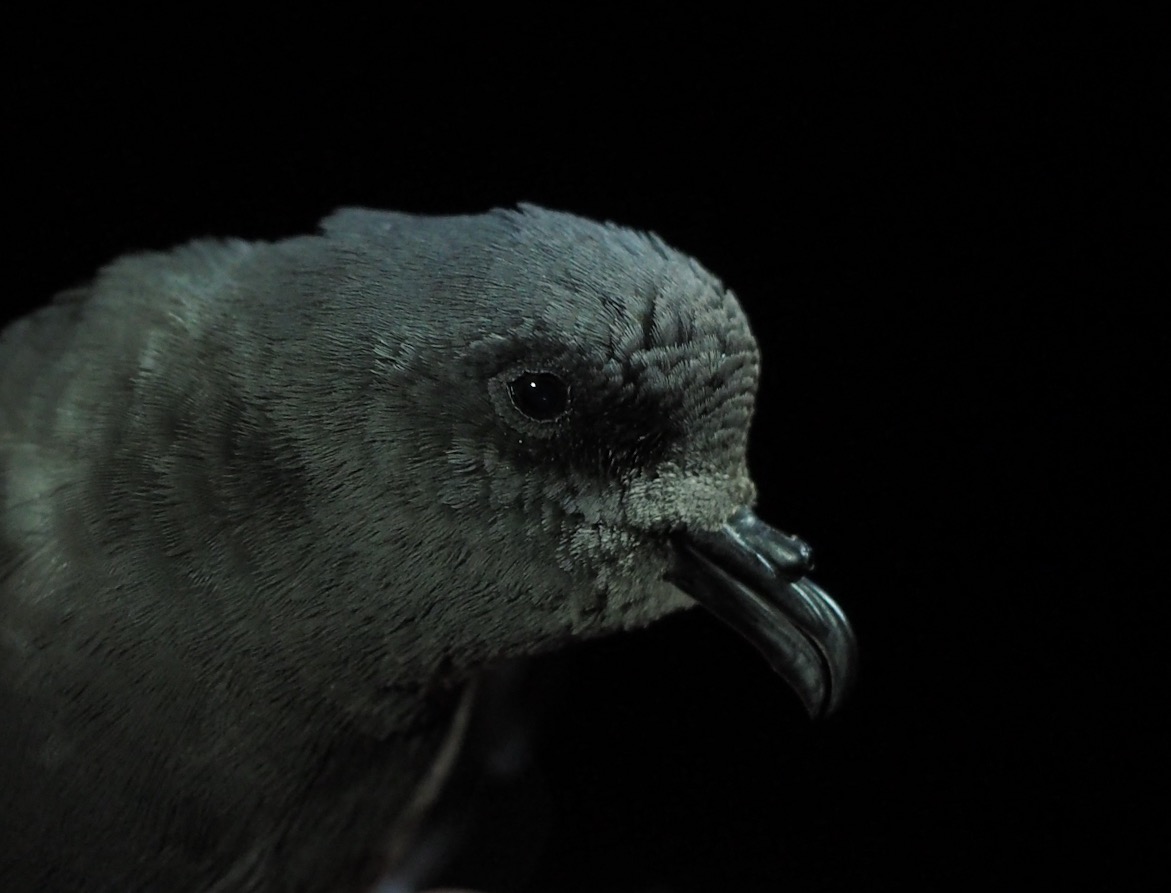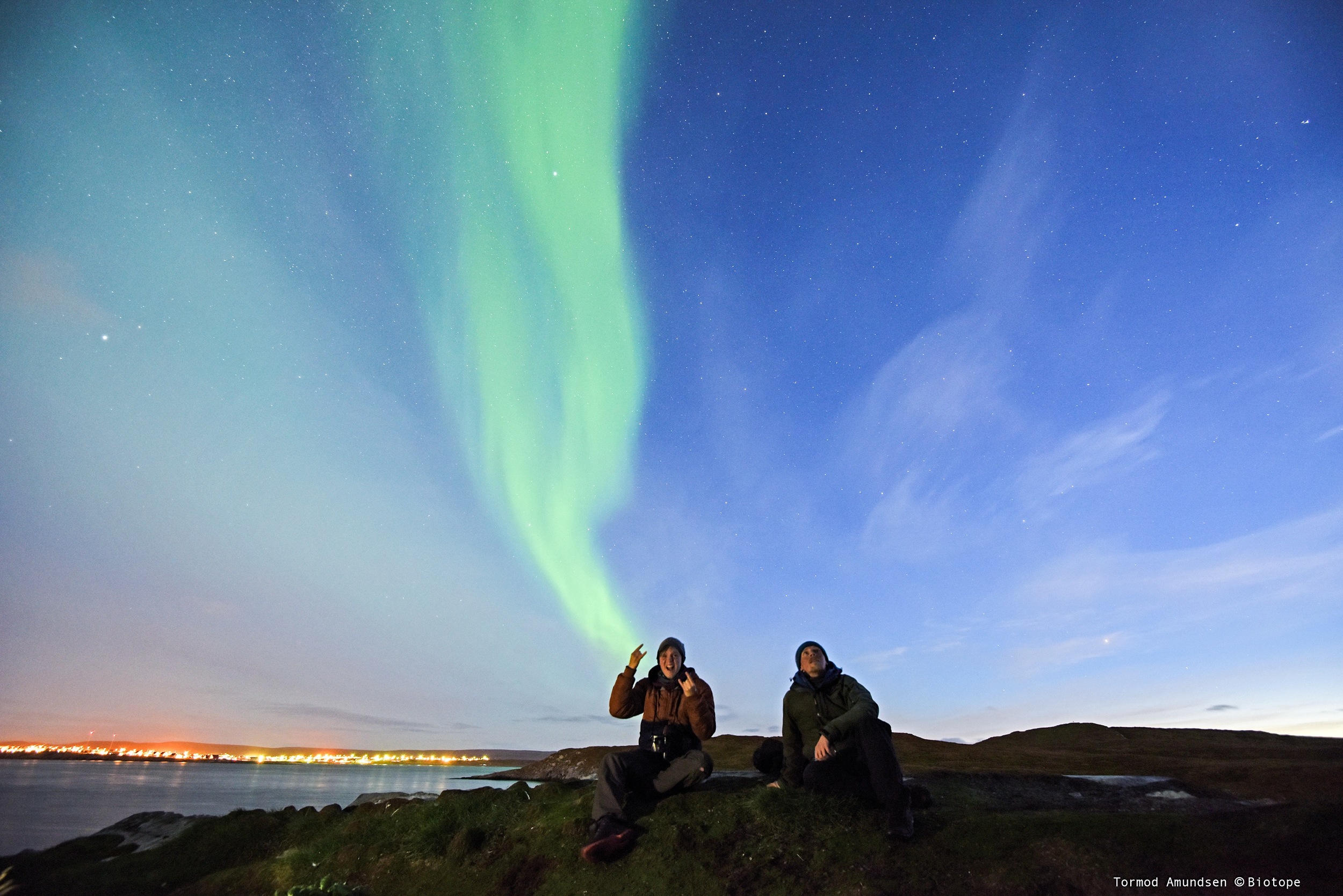March - August: The Hunt
80 000 seabirds all in one place does not go unnoticed by the predators of the bird world. As 10 species of seabird get down to the business of breeding, their eggs, chicks and even the adult birds themselves are targets for various birds of prey, gulls and corvids.
Perhaps the most sought after predator on a trip to Hornøya is the Gyrfalcon. The Gyrfalcon is a powerful predator of seabirds, able to take down kittiwakes and auks in flight. They use ambush tactics, hurtling through the sky and slamming into their prey, before carrying them somewhere secluded to pluck and eat. During the breeding season, Gyrfalcons visit Hornøya daily.
White-tailed Eagles are the largest birds of prey to visit Hornøya. Kittiwakes are usually too agile for the eagles, which are more likely to hunt guillemots and shags. However, some eagles target kittiwake chicks, flying close to the cliff and using their powerful wingbeats to dislodge the chicks from their nests.
By summer, Arctic Skuas have returned from the South Atlantic to breed in Varanger. They gain most of their food by robbing other seabirds, harassing birds that are carrying fish back to their nests. Their targets range from Kittiwakes to Puffins and other auks, the skuas twisting and turning with every movement their victim. A small number of Great Skuas may be seen around Hornøya too.
March - April: Puffin Fight Club
After a winter spent at sea, Atlantic Puffins return to Hornøya in March and April, when the island is still covered in snow. Puffins nest in burrows, using their large beak as a shovel to dig tunnels in the soil around the cliffs. For a puffin, choosing place to nest is serious business and best burrowing sites are worth fighting for. Puffins mate for life, and once one pair constructs and uses a burrow, they will return to that site every year. Young, unmated puffins try to secure a nesting site for their . Groups of puffins may be standing quietly in the snow one minute and viciously fighting the next. Their sharp bills become formidable weapons as they attempt to floor a puffin encroaching on ‘their’ turf. Even guillemots that wander into their burrowing space are chased out.
March - June: Architects of the birdcliff
Most seabird species on Hornøya are not known for their nest-building skills. Guillemots and Razorbills simply lay their egg onto a bare ledge of rock. Shags build a small circle of sticks and seaweed. Puffins go to a lot of effort into making their nesting burrows, though these holes are no architectural feat. The Kittiwakes however, are creators of the cliff’s high rise apartments.
Kittiwakes arrive back on Hornøya in March, when snow is still thick on the ground, but as the spring progresses and the snow melts away on Hornøya, you can see huge numbers of Kittiwakes flocking around bare areas of ground. Here they fill their bills with grass, seaweed and mud, often getting filthy themselves in the process. These materials are used to create their nests, the mud being the cement which holds all the vegetation together.
Older pairs of Kittiwakes reuse their old nest sites, adding more and more nesting material every year. These nests become multi-tiered platforms, dwarfing the nests of those birds which have just started their breeding lives. Some may be so large that they fall off the cliffside under their own weight! The nests themselves become fertile micro-habitats on the usually barren cliffsides. The combination of mud, dung and organic matter means that plants start growing on the sides of the nests. In the non breeding season, when the Kittiwakes have left, migrating passerines such as pipits and buntings may feed inside the nests, which are a magnets for insects.
July: The Guillemot Run
Guillemot chicks have one of the more dramatic entrances into the world. They hatch on a steep cliff, always within danger of dropping from their nest and plummeting to the ground. They are fed by their parents until they are large enough to fledge. At this time, they do exactly what they have been avoiding their whole short lives - they jump off the cliff! Encouraged by their parents, the tiny chicks leap from their nest, their final goal: the sea. Some chicks manage to land in the water from their first jump. Chicks further from the sea hit the rocky ground, then must run as fast as they can to the sea, avoiding gulls and ravens. The male parent guillemot sites on the sea, calling to his chick, and the chick calls back, until the two are reunited in the water. When
Sometimes, adverse weather means that chicks have to wait until conditions are right for fledging. During this situation, when perfect days of low wind finally come, potentially hundreds, if not thousands of guillemot chicks will "take the leap" from Hornøya. The spectacle is mindblowing, the air thick with jumping chicks, and the grass rustling with little guillemots running to the sea. The sound is incredible too, the chirping of every chick mixing with the bleating of the male guillemots waiting to meet them creates a deafening roar. Truly nature at is most brutal and spectacular.
September: Dark Knights of the Arctic
Leach’s Petrels are small seabirds that live almost their entire lives far out at sea, feeding on zooplankton and shrimps picked off the surface of the waves. Petrels mate for life, and can live for over 30 years. They nest in colonies on islands, including Hornøya, laying a single egg per year in a burrow or hidden rock crevice. Because the petrels’ size makes them vulnerable to carnivorous gulls, they return to their nests only during the hours of darkness. On Hornøya, the midnight sun means there are no dark nights until early autumn, so petrels do not start breeding here until August or September!
When they return to their nest sites, they use sound to locate them; calling to their mates which answer back. The Leach’s Petrel call is an unearthly giggling noise, totally unlike any other bird. Old pairs meet up at the start of the breeding season every autumn at their old burrows, each bird calling out for their mate.
Sitting at the base of the bird cliff, glimpsing these bat-like birds flitting through the dark with their calls reverberating off the cliff side, is a truly spectral experience. When the chance of the Northern Lights is added to the experience, the ‘empty’ bird cliff in September becomes a birding event like no other.

